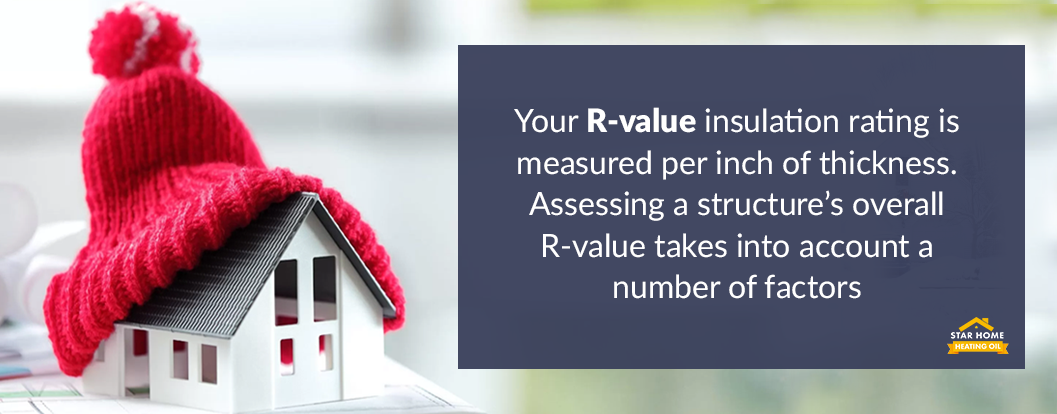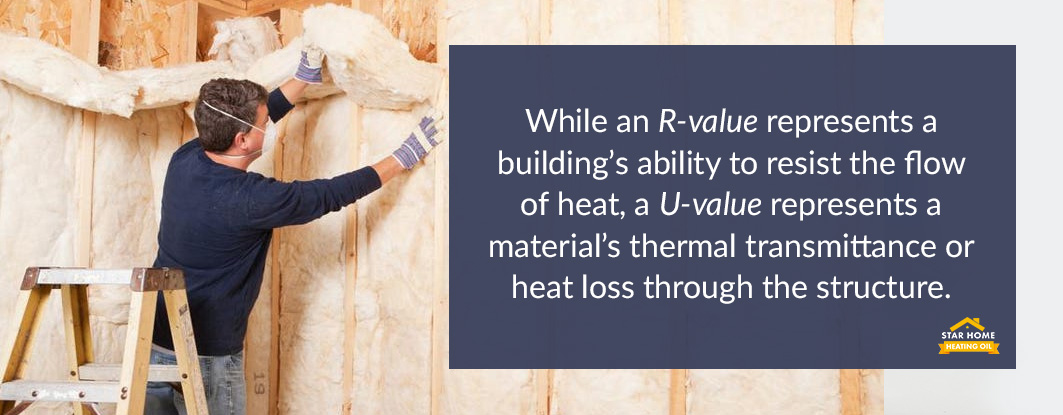How Your Home’s U-Value Impacts Heating Oil Usage
By the time February rolls around, we are finished with the holidays, and most of us begin to pine for springtime. Temperatures across the tri-state region have had their ups and downs, but as home heating oil customers in New York can attest, winter is still in full swing. Part of enduring the long winters of the Northeast means that we not only have to turn our heating oil furnaces up higher than our Southern neighbors but also keep the fuel oil flowing for more months out of the year!
How does your heating oil consumption compare?
At Star Home Heat, we understand that keeping your furnace full of fuel oil can be a challenge with today’s heating oil prices. Having to crank up the thermostat throughout the long winter can put a real dent in your household budget, but you want to avoid letting your heating oil tank go empty. Why? Not only is it a chilly inconvenience, but it can also cause damage to your furnace. Being part of the heating oil industry, we want to do whatever we can to keep your heating oil delivery costs low.
What are some hidden factors that drive up my heating oil costs?
In one of our recent blogs, we talked about the hidden factors that drive up heating oil usage. With home heating oil prices today, this can leave a lot of homeowners scratching their heads, trying to figure out ways to spread out their heating oil delivery orders.
A major area that home heating oil consumers may not consider is their home’s construction. No two homes are treated alike. Your home may have been made from brick, wood, concrete, or other materials. These materials provide a certain amount of insulation to help keep your home cool in the summer and warm in the winter. The better a home is insulated, the less you have to rely on burning heating oil. So if you are being conscientious about your heating oil use and still feel like you are calling for heating oil delivery more frequently than your neighbors, it may have something to do with your home’s construction.
The Heat Flow and Energy Efficiency of Your Home
Heat flows in three ways: conduction, convection, and radiation. These factors play a big role in your home heating oil use. The terms used to measure energy efficiency are R-value and U-value, which applies to your home’s outer shell. For example, walls, windows, and your roof each have an R-value and a U-value.

What is an R-value?
Your home’s R-value is short for “Resistance Value.” This is a construction term that represents the measure of the thermal resistance of a structure and how well a particular construction material keeps heat from moving into or out of that structure.
The higher the R-value rating of a material, the more efficient it is. Homes that are more energy-efficient sustain fewer temperature spikes and drops due to the weather, and as a result, help save on your heating oil use.

Think of it this way. Heat passes through copper quickly, which means it’s a great heat conductor. For this reason, it would make a very bad wall, because it would be dramatically affected by changes in outside temperature. It would get very hot in the summer and cold in the winter. Just imagine your home heating oil bills! Naturally, you want an exterior wall that resists this heat transfer, which would be rated with a high number.
Across the United States, it is common to see an R-value range between 0-66, with the highest numbers being the most insulating. Since this region of New York State lies within climate zone 4, it can sustain some frigid temperatures in the winter. And folks from Rosedale to Bayside to Port Washington know that they need all the help they can get with home heating oil prices today.
What is a U-value?
A building’s U-value is the other component that rates how energy-efficient your home is. For some of us, that is shorthand for “How much will my heating oil bill be this winter?” While an R-value represents a building’s ability to resist the flow of heat, a U-value represents a material’s thermal transmittance or heat loss through the structure. In other words, the U-value measures how easy it is for heat or cold to pass through a structure.

A low U-value number means that heat and cold do not pass easily through the structure, while a high U-value number does.
So a “good” U-value rating is a low number, and a poor U-value would be a higher number. In that sense, it’s sort of the opposite of an R-value, however, the goal of each is for better energy efficiency. Higher levels of insulation translate to lower utility bills including home heating oil savings.
How are my windows affecting my heating oil costs?
The energy efficiency of a window is often rated by its U-value. This is an area where a lot of heat can escape. To save on energy costs like home heating oil, you want to have windows that do not easily transmit heat in the summer or lose heat in the winter. Single and double-pane windows have the following ratings, on average :
- Single-pane window
- Thermal insulation (R-value): R-1.0 (less efficient)
- Thermal transmittance (U-value): U- 1 (less efficient)
- Double-pane window
- Thermal insulation (R-value): R-2.0 (more efficient)
- Thermal transmittance (U-value): U-.5 (more efficient)
How can I save money on home heating oil?
While you can’t easily swap out all of your home’s insulation, replacing or adapting your windows can make your home substantially more energy-efficient. Relying less on your thermostat allows you to use less heating oil and distance your heating oil delivery orders further apart, which can provide substantial savings in the long run. Some options include:
- Replacing your single-pane windows with double-paned, EnergyStar windows
- Caulking & sealing existing windows
- Installing a window insert or plastic film to safeguard against heat loss
- Install lined window curtains to keep rooms warmer
For more ideas on how to stretch your fuel oil budget, read our blog, 5 Ways to Save Money on Heating Oil.
The Star Home Heating Oil Advantage
Our team at Star Home Heating Oil understands that heating oil delivery costs can add up. This is why we have made it our mission to provide New York state homeowners access to the best heating oil prices around. Through our convenient online platform, you can locate pre-vetted, reputable heating oil delivery companies in your region. Whether you’re in Baldwin, Mineola, Levittown, Little Neck or anywhere in between, you don’t need to call around, haggle, or wait for price quotes on your next heating oil delivery. Instead, you can conduct an easy online search. You will instantly get matched with a pre-vetted, local heating oil company that can offer you the lowest heating oil prices available in our network.
Look up home heating oil prices today with no haggling and no guesswork! Book your home heating oil delivery today!


